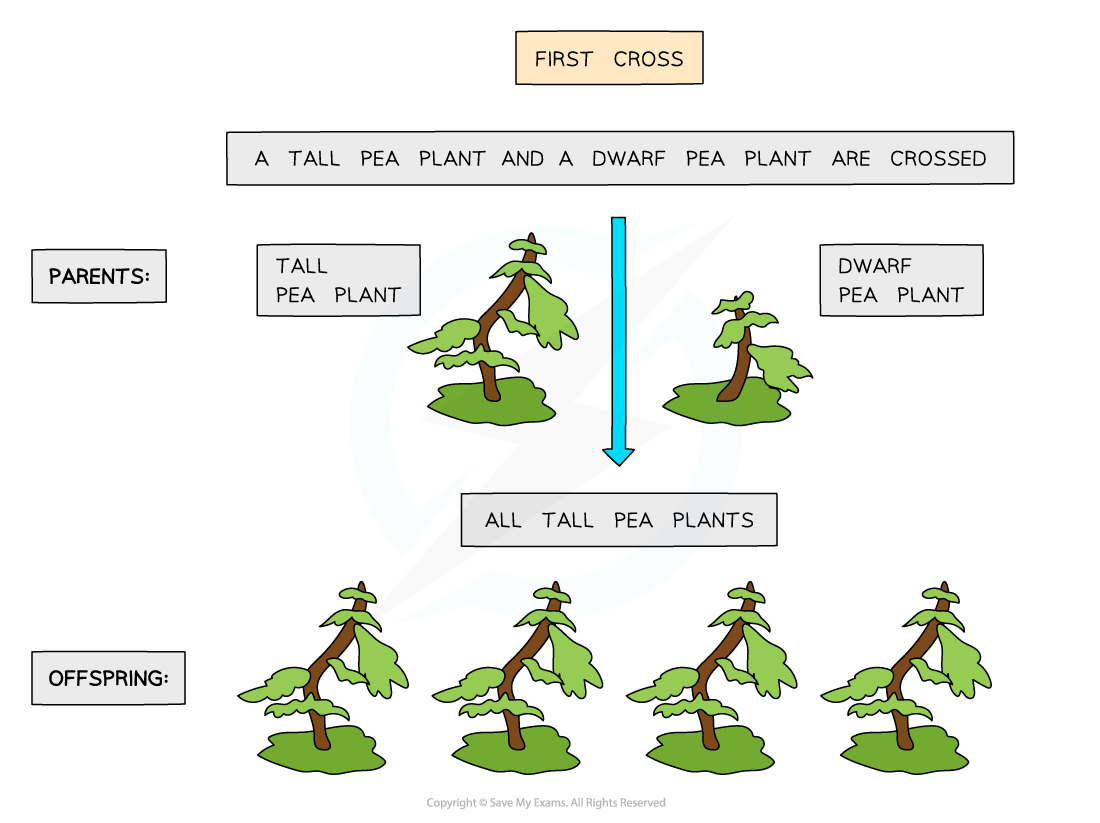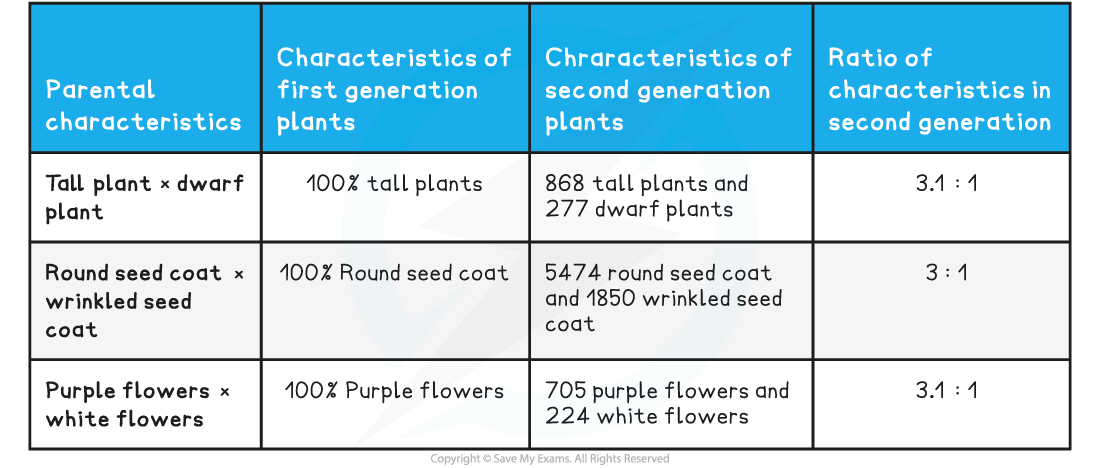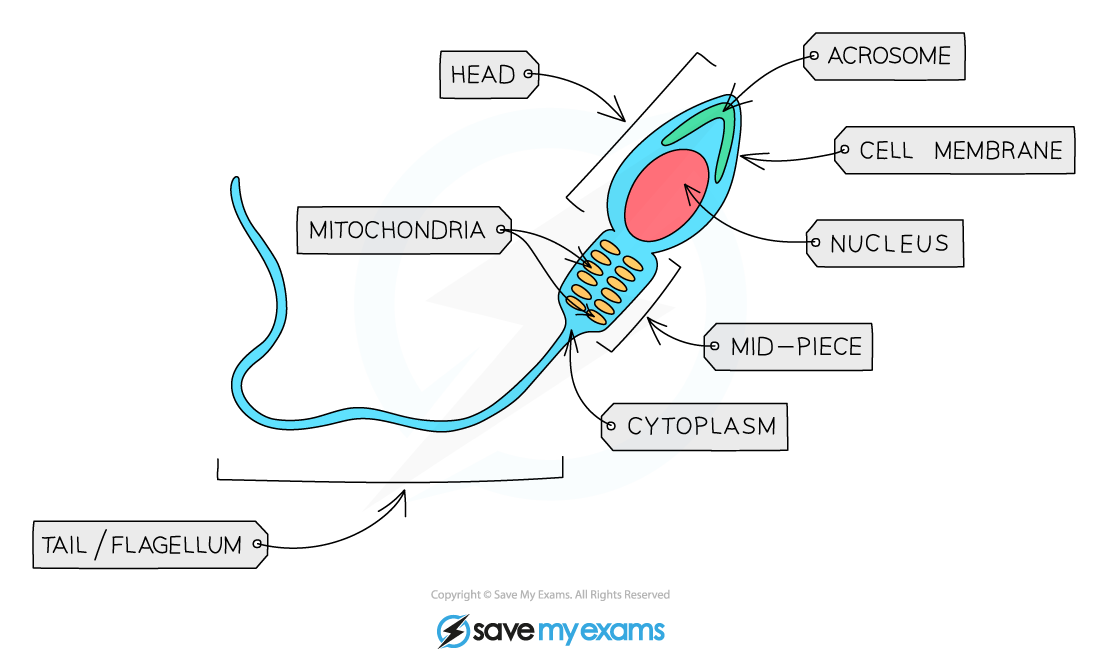Mendel's Experiments
- Gregor Mendel was an Austrian monk
- He was trained in mathematics and natural history at the University of Vienna
- In the mid-19th century, Mendel carried out breeding experiments on large numbers of pea plants whilst looking after the monastery gardens
- He studied how characteristics were passed on between generations of plants
- Due to his extensive work on the understanding of inheritance, he is sometimes called the father of genetics
Mendel's groundbreaking work
- Mendel carefully transferred pollen from one pea plant to the reproductive parts of another
- This technique eliminated any uncertainty from his data since he knew which plants were fertilized by which pollen
- He collected the pea seeds from these plants and grew them in favourable conditions to find out their characteristics
- He also cross-bred offspring peas in order to find out which, if any characteristics would appear in future generations
- Mendel investigated the height of pea plants, the colours of their flowers and the smoothness of their seed coat


Mendel's pea plant crosses
Mendel's Pea Plant Results Table

- Mendel found that characteristics were inherited in a predictable pattern
- All pea plants in the first generation had the same characteristic as one of the parental plants
- The offspring plants in the second generation had characteristics of both parent plants in a 3:1 ratio
- Without knowing it, Mendel had discovered genes, he referred to them as 'units of inheritance'
- He also discovered that some genes are dominant and some genes are recessive
- Different forms of the same gene are called alleles
Mendel's Experimental Technique
NOS: Making quantitative measurements with replicates to ensure reliability; Mendel's genetic crosses with pea plants generated numerical data
- Mendel was not the first to investigate inheritance using plants
- However, he was the first to generate strong numerical (quantitative) data, as opposed to observations only (qualitative)
- Mendel also used a large number of pea plants in his studies, for example in one investigation he recorded the characteristics for over 7,000 pea seeds
- By recording data for such a large number of seeds he ensured reliability in his conclusions
- Many replicates are important in a scientific investigation because they allow for:
- Ensuring reliability of results
- Identification of anomalous points
- Further statistical analysis to establish a significant difference
Gametes
- Gametes are the sex cells of an organism
- For example, the sperm and egg (ovum) cells in humans
- The egg is larger than the sperm as most of its space contains food to nourish a growing embryo
- The sperm cell contains many mitochondria to release energy for its motion
- Gametes fuse during fertilization to form a zygote
- These sex cells are formed during meiosis and only have one copy of each chromosome and so are haploid cells
- For humans, that means the sperm and egg cells contain 23 single chromosomes in their nucleus
- As there is only one chromosome from each homologous pair there is only one allele of each gene present
- This allele may be dominant, recessive or co-dominant


The structure of human gametes - the sperm and egg
Exam Tip
You will not need to be able to quote all of Mendel's experiments and his results but you should be able to explain why there is always a 3:1 ratio in second generation organisms
